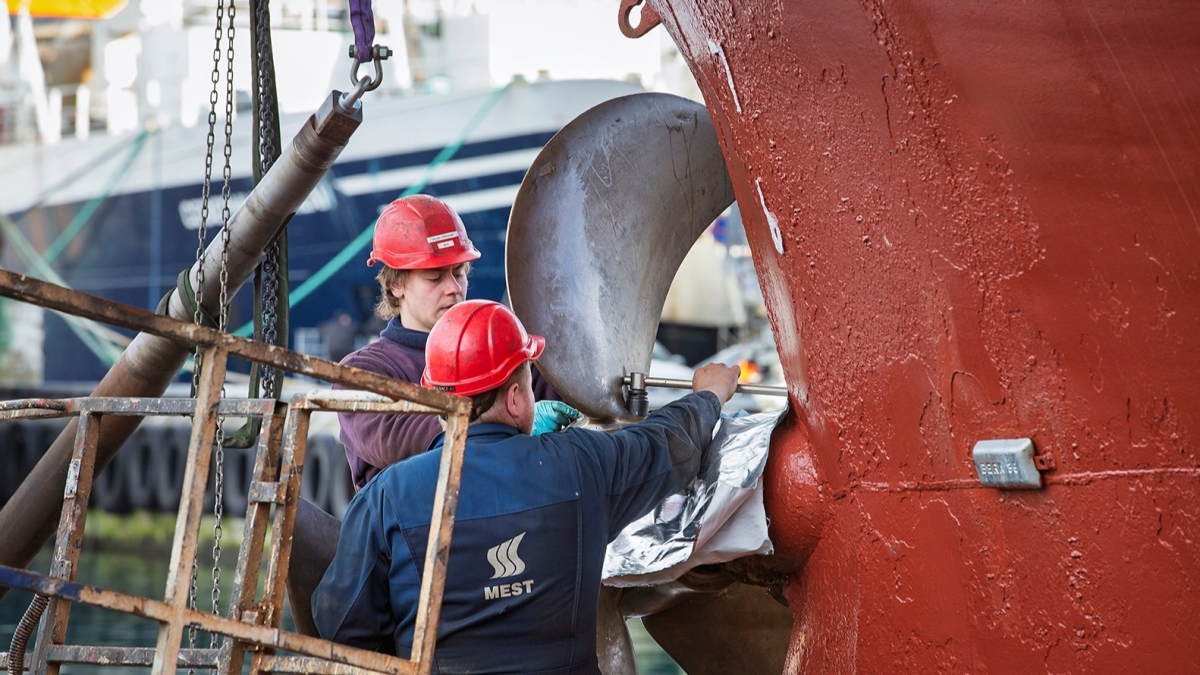Employees
22. Apr 2025
29,834 employees in March – up 1.7% year-on-year

Employee numbers continue to grow, but the growth has slowed down over the past year, as seen in the trend after adjusting for seasonal variations and other random changes.
In march, there were 29,834 employees in the Faroe Islands. This is 498 employees (1.7%) more than in March 2024.
[px-graph-1]
80% of the growth is under public control
In March, there were about 15,200 male and about 14,600 female employees in the Faroese labour force. Compared with March 2024, we see an increase of 194 (1.3%) men and 304 (2.1%) women.
[px-graph-2]
In March, 56% of all employees worked for employers under private control. The proportion is higher for men, with three out of four working in this group.
The remaining 44% worked for employers under public control, which include public institutions and public limited companies. Over 62% of female employees work in this group.
[px-graph-6]
Overall, 80% of the growth (400 employees) were added to employers under public control. This is especially women, which were 311 (3.5%) more in March this year compared to last year. On the other hand, employers under private control had 7 fewer female employees compared to March last year. The number of male employees has seen a growth of 89 (2.3%) for employers under public control and 105 (0.9%) for employers under private control this March compared to last.
[px-graph-3]
Biggest drop in manufacturing
The table below shows the number of employees at the first level of NACE, which is the classification of economic activities in the European Union, in the latest month compared to the same month the previous year.
The largest drop in the number of employees was in the economic activity "Manufacturing", where they were 115 fewer employees this March compared to last. Notably reduced employment numbers are also seen in the economic activities of "Transportation and storage" and "Accommodation and food service activities".
Note that from February 2025 the employees in Tórshavn Municipality have been partially separated. Residential elderly care in Tórshavn Municipality has moved economic activity from "O Public administration and defence" to "Q Human health and social work activities" in the sub group "Q87 Residential care activities". Due to this change the numbers in these activities are not comparable across the data break before and after February 2025. The data break is visible in the table below, as the activity "O Public administration and defence" suffers a large reduction in numbers and the activity "Q Human health and social work activities" and the relevant sub group "Q87 Residential care activities" have seen a large increase in number of employees. These numbers have to be read with caution.
[px-graph-6]
Non-resident employee growth stalls
To qualify as a long-term resident, an individual must have resided in the Faroes for either half of their lifetime or for seven consecutive years at some point in their life.
Recent years have seen a significant increase in the number of employees without long-term residency. This growth has now slowed down, as shown in the graph below. In March there was a year-on-year increase of just over 50 employees (2.6%) without long-term residency. For comparison, this increase was 18% from March 2022 to March 2023.
[px-graph-5]
About the employee statistics
Statistics Faroe Islands’ employee statistics include persons aged 13 or over who receive wages taxed at source (known as A-income in the Faroes) in the registered month, corresponding to at least 4 hours per month through the pay-as-you-earn (PAYE) tax system.
Statistics on employees and jobs follow the guidelines in the International Labor Organization (ILO) manuals on employees and jobs under the United Nations. The ILO defines an employee as a person of working age who has been employed by an employer for at least a short period and has produced goods or provided services for a wage. This includes a) employed persons who have worked at least 1 hour during the period (typically set to 1 week) and b) employed persons who are temporarily out of work (due to e.g. sick leave, parental leave or time off in lieu).
The source of employee statistics is monthly A-income through the PAYE tax system. In accordance with the international standard of at least 1 hour per week, the monthly wage threshold is calculated as 4 hours of wages per employee, since there are about four weeks in a month. The hourly wage is set as minimum wage + holiday pay as per the agreement between the Faroese Labour Union and the Faroese Employers' Union. This means that if the monthly wage is below the limit, the person is not considered an employee that month. According to the Faroese Work and Safety Inspectorate, 13 is set as the lower age limit in the statistics as children younger than 13 cannot be employed.
Updates to employee statistics
In the first half of 2024 the employee statistics have been updated and revised. This has brought about a slight increase in the total number of employees. On average, the number of employees is now 500-1,500 higher each month, for various reasons. Primarily because the new statistics cover a wider age range. The previous figures covered ages 16-74, but now anyone aged 13 or over is included. Other changes include a lower wage threshold value, the addition of more parental leave registrations and the fact that certain payments through the PAYE tax system, previously not considered wages, are now correctly recorded as wages. Most of these payments were previously registered as public benefits, and the new registration affects the employee statistics. With these changes, the latest figures cannot be compared to previous data. The old tables are, however, still accessible in the statbank but will no longer be updated. These tables are labelled 'Outdated' in the statbank.